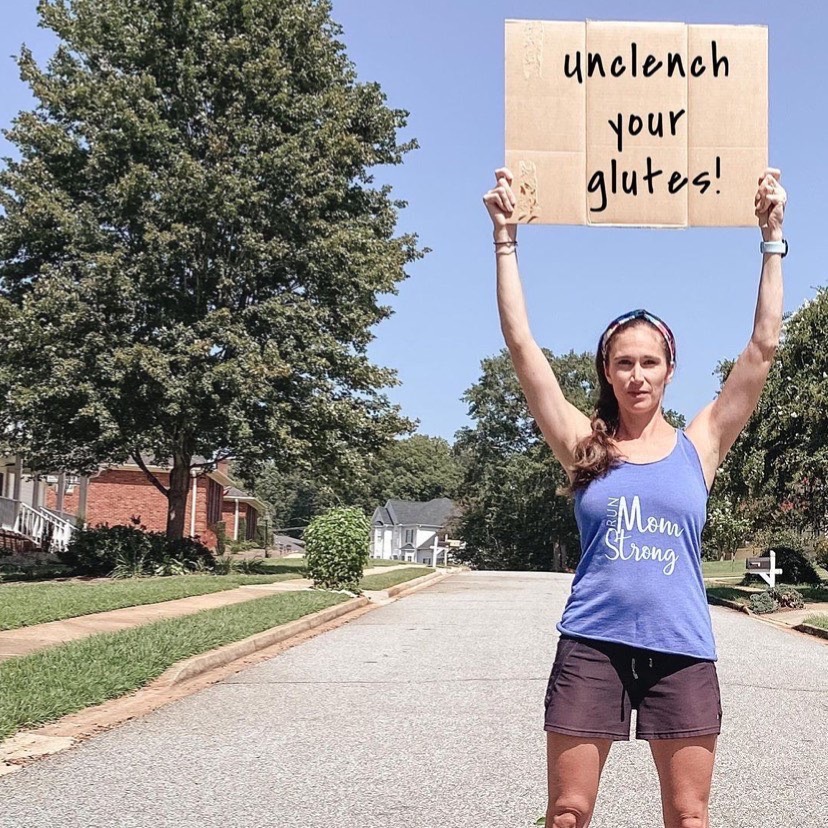
No More Pancake Butt! Glutes Workout at Home for Stability and Power
Jun 15, 2023Let's Talk About Working Your Glutes
I’ve got a question for you… Do you relate to any of the following terms? Pancake butt? Mom butt (it’s a real thing, btw)? Sleepy glutes?
As for me? All of the above!
For decades, I didn’t really care. I just thought I was destined for a pancake butt forever and blamed my genetics (thanks, Mom). While genetics is definitely part of that and Sir Mix-A-Lot is never going to be writing any songs about me (IYKYK), after struggling with some hip pain and pelvic floor symptoms with my running, I realized that my backside did actually need a bit more attention than I was giving it.
Glute strength is important for hip stability (injury/pain prevention), overall strength (they work with so many movement patterns), and power (think push-off in your running stride)!
Here are two things that may help you “wake up your glutes.”
Go after length first.
The first thing about the glutes (and muscles in general) is that they need to lengthen to load. Glutes that are chronically squeezed/clenched are not strong glutes! Tell me, have you noticed yourself squeezing/clenching your glutes when you are standing? That’s an unconscious strategy to help create stability where you don’t have it. It’s super common postpartum, but so many women do it without thinking.
While you are at it, unclench your jaw and unlock your knees. And here’s a secret, continuing to pull them tighter with booty bands and clamshells probably isn’t helping this situation either! You need length first!
To do this, let’s break it down into two main movement patterns: split squats and hinges.
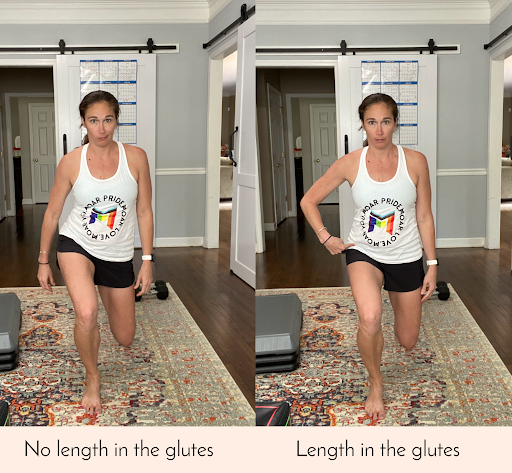
Can you spot the difference? On the right, I’m focusing on sending the hip of the front leg back in space to keep and keep my hips level. This gives me length in my glutes! Then I can actually use them when I press back up. Lengthen to strengthen!
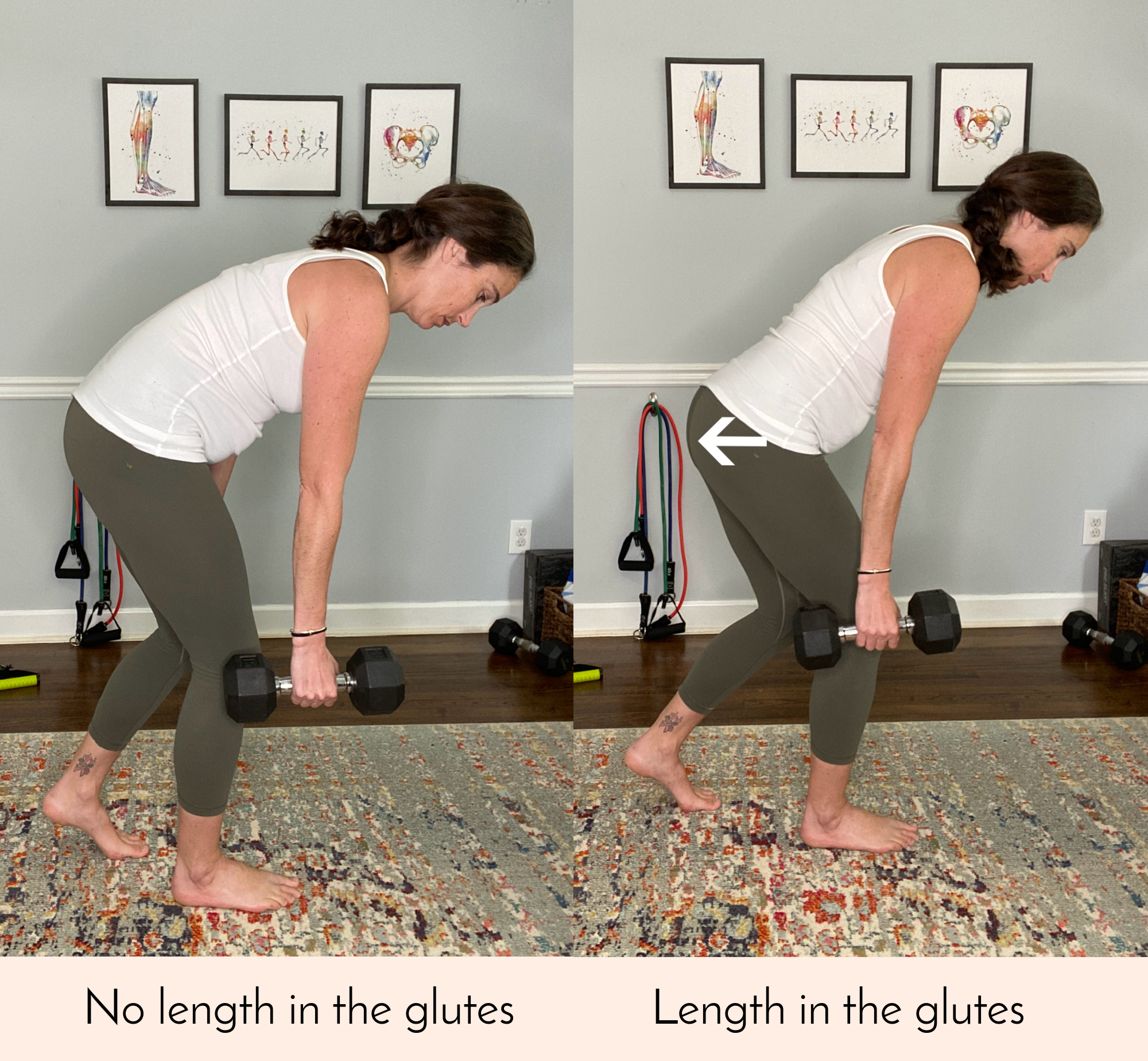 Can you spot the difference? On the left, I’m just hanging by bending down from the top. On the right, I’m focusing on shifting those hips back in space while tipping my pelvis forward on the femur. Think spreading the sits bones apart.
Can you spot the difference? On the left, I’m just hanging by bending down from the top. On the right, I’m focusing on shifting those hips back in space while tipping my pelvis forward on the femur. Think spreading the sits bones apart.
Ground into your WHOLE foot.
Truly grounding into your foot with pronation is necessary for the glutes to do their job (everything is connected). This true grounding can be missing in two places: losing the tripod or not getting your center of mass over your foot.
Find your tripod.
You may be living more on the outsides of your feet and/or gripping with your toes, preventing loading into the whole ball of your foot, especially under the big toe (glute gripping, toe gripping, jaw gripping, see a trend?). One way of helping with this is to float your toes (elevate your foot on a step, block, or book and let your toes hang over the edge). This will help you really ground into your forefoot. Focus on a nice, tripod foot - both sides of the forefoot and heel connected with the ground.
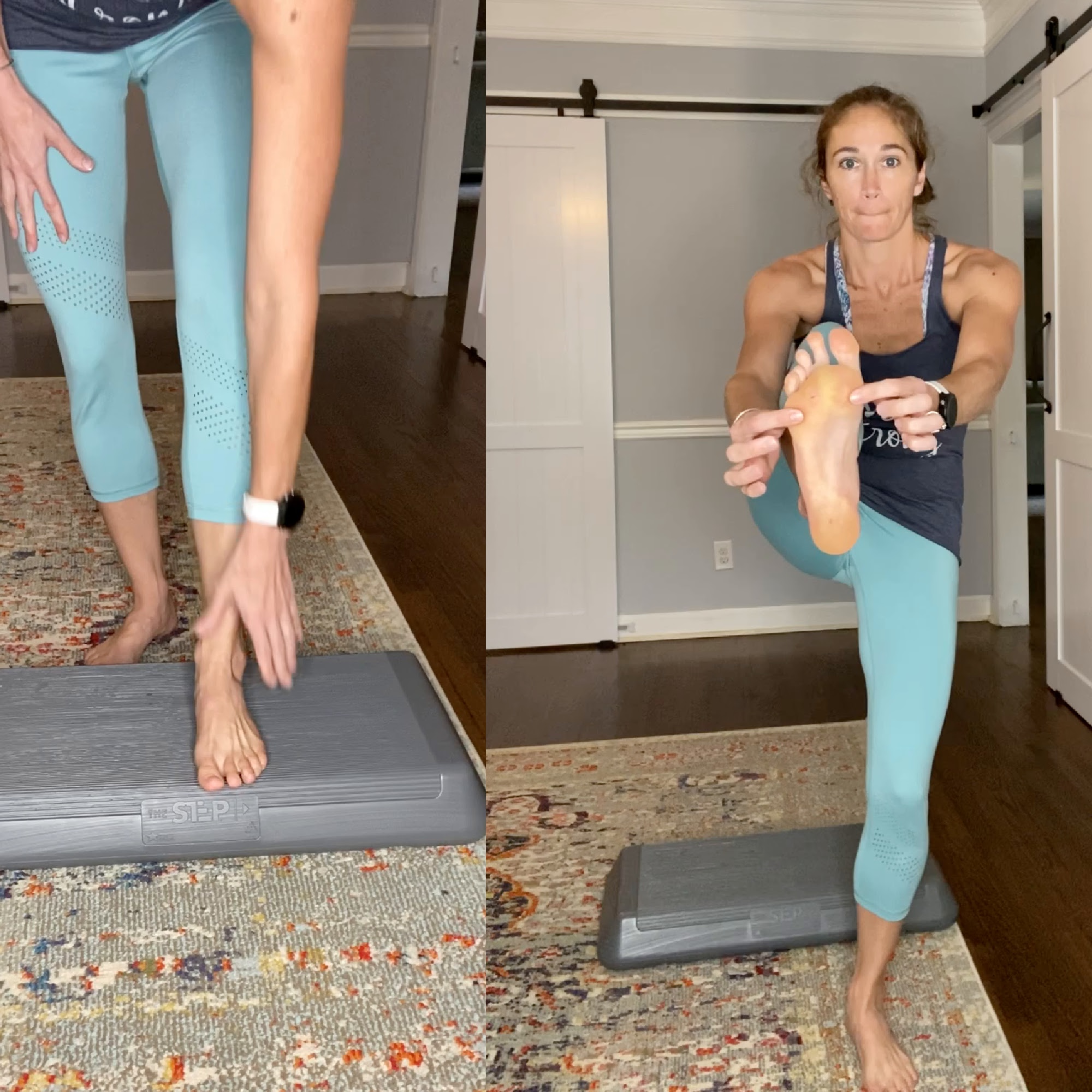 This strategy is especially helpful with the split squat. If you have a flatter, more pronated foot (living more on the inside of the foot), you might need a slightly different strategy. In this case, with the above, work on really sensing the outside of your heel.
This strategy is especially helpful with the split squat. If you have a flatter, more pronated foot (living more on the inside of the foot), you might need a slightly different strategy. In this case, with the above, work on really sensing the outside of your heel.
Get your center of mass over your foot.
I find this to be especially helpful with the hinging pattern. Shifting the hips back in space with a hinge is a great way to find the length we discussed above. However, what I often see is the knee shifting back with it. You need to keep the knee bent over the midfoot to keep yourself loaded over that foot.
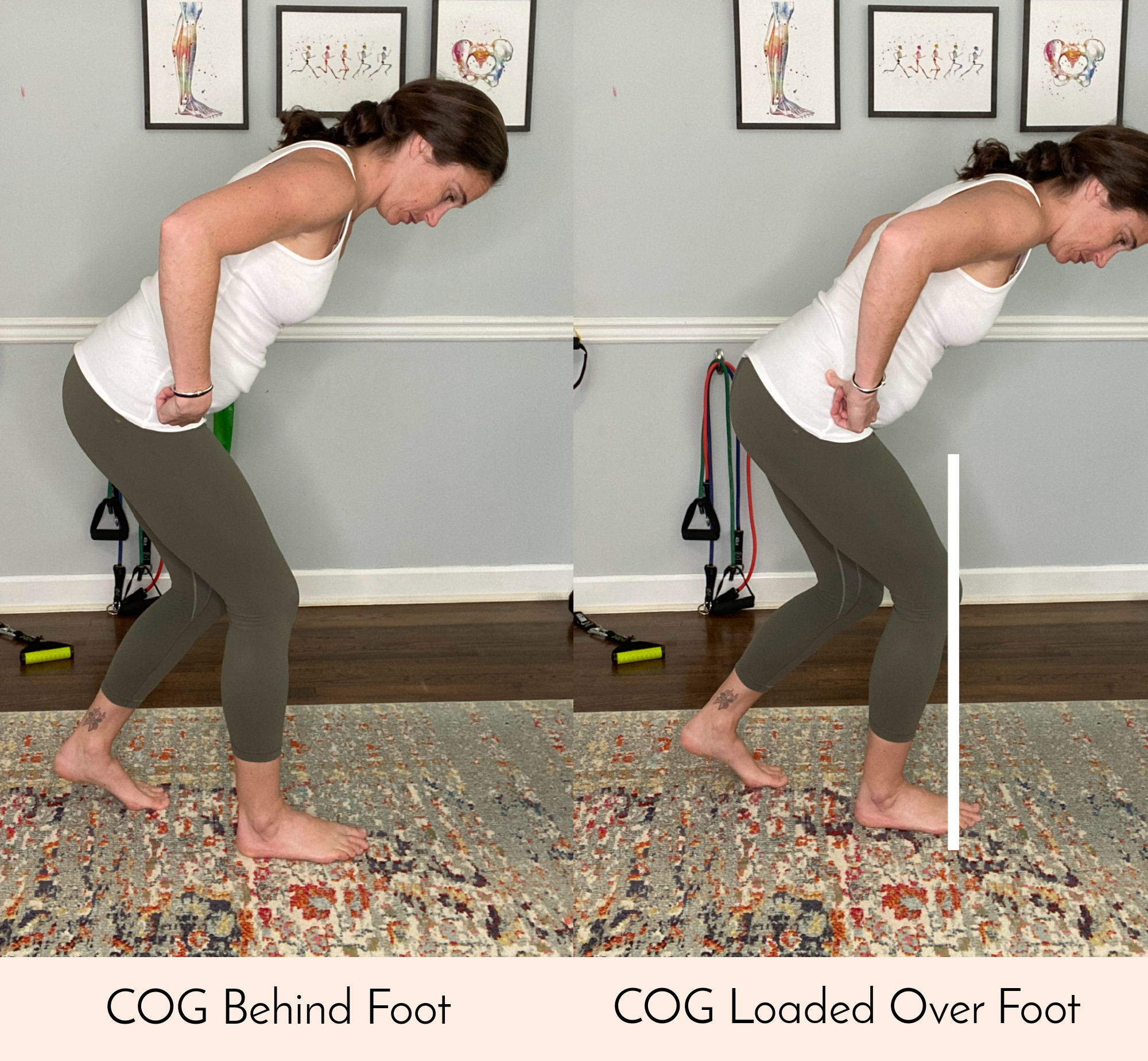
Knee over midfoot promotes pronation in the foot. Pronation/length in the foot helps promote length in those glutes. Even on a more pronated foot, you need this. Just take extra care to stay heavy in the outside of your heel while you do it.
Try this hinge to put it all together!
Set it up so that your knee is bent over the middle of your foot. Pressing into the foam roller as you move will hold it there. Level it up and consider your natural asymmetries: You can find more about that in this article.
On the left:
while maintaining your tripod foot, focus on staying heavy in the outside heel.
On the right:
while maintaining your tripod foot, focus on staying heavy on the ball of your foot under your big toe.
These two overall strategies are more focused on finding your glutes for stability. Once you master this you can work on propelling forward from there!
Length to load…. Load to propel! Say goodbye to pancake butt, work your glutes, and improve your stride!
In my Glute Accelerator Crash Course we progress daily through my favorite yet simple glute exercises that will have you really feeling your glutes work by finding that length. You'll go from heavy and clunky to strong, fluid and powerful in your stride.
Next on Your Reading List:
How To Deadlift Correctly & Why "Hinging" is Important For Runners
Stretch Or Strengthen! What are your Hip Flexors Asking You to do
Dump the Shoulder Slump! How to Improve Hunched Shoulders With 2 Exercises
Don't miss a thing!
Join my newsletter, be the first to know about what's coming up, and get even more great content!

